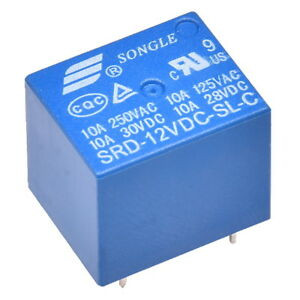
Prices incl. GST
Ready to ship today,
Delivery time appr. 1-3 workdays.
7 in stock
- Product Code: MGSL-0512
- MPN: 0512
Description
Relay is a remote control electronic switch normally controlled by another switch, computer or control module. Functioning as a standard 12 volt replacement or addition for full voltage, these relays are a great option for equipment existing in vehicles today. The mounting bracket included with the relays allows for the relay to be mounted directly to a vehicle or other electrical application. These relays are an optimal solution for full voltage applications on a variety of vehicle equipment including head lamps, auxiliary lamps, fog horns, motors for fans, window lifters, air conditioners, heated rear windows, and more. Choose from a 12V DC relay without a resistor. Both are designed to deliver superior, long lasting performance.
-
Mechanical life - no load = 1,000,000 cycles at +85° C the N.O. contacts will carry a continuous load of 50 amps.
-
30/50 Amp 12V DC.
-
Permissible ambient temperature: -40° C to 85° C.
-
896H-1CH-D1-12VDC = Item #73980.
Relays are switches controlled by electrical power, like another switch, computer or control module. The purpose of a relay is to automate this power to switch electrical circuits on and off at particular times. The real benefit behind a relay is more than automation. They also provide the ability to switch multiple circuits, including different voltage types, within the same relay at the same time.
12V DC relay switches are the best solution for full voltage applications, as they allow a low current flow circuit to control a high current flow circuit, like a vehicle's horn, headlights, auxiliary lamps, fan motors, blower motors and countless pieces of equipment existing on vehicles today.
|
| Looking Inside a Relay If we were to open a relay, you would see an electromagnet coil, the switch, and a spring. The spring holds the switch in position until a current gets passed through the coil. The coil then generates the magnetic field which moves the switch on and off. |
|
| Numbers of a Relay Looking at the diagram, we see the pinout of a typical 12V relay. Note that each pin is numbered. 85 and 86 are the coil pins while 30, 87, and 87a are the switch pins. 87 and 87a are the two contacts to which 30 will connect. If the coil is not activated, 30 will always be connected to 87a. You can think of this as the switch in OFF. When current is applied to the coil, 30 is then connected to pin 87. The great thing about relays is that you can set 87 and 87a to be either open or closed, depending on how you need the switch to work. If you want a closed relay, you will want to wire to 87a. If you want a normally open relay, you will wire to 87. Although most relays are labeled at the bottom, you can always find the 30 pin set perpendicular to the other pins for easy identification to the power source. |
|
| Output for a Relay Realizing that 85 and 86 are the coil pins, these pins will be transferring the current through their coil. One of these will be used to ground your current, while the other will be connected to an accessory, or your point of current. 87 and 87a will be connected to your controlled accessories that you wish to turn on and off with your relay. 30 will then be the pin connected to your battery power. |



